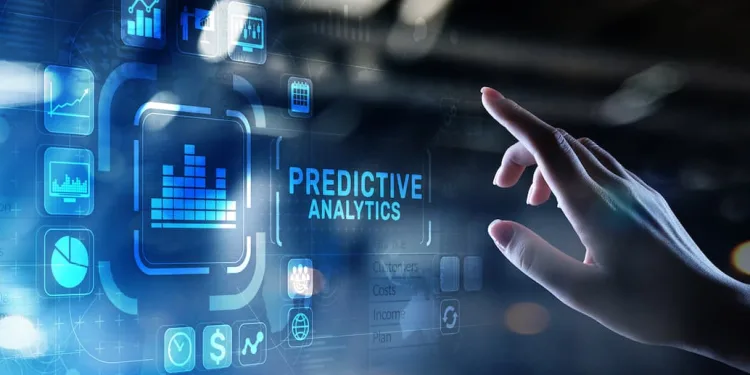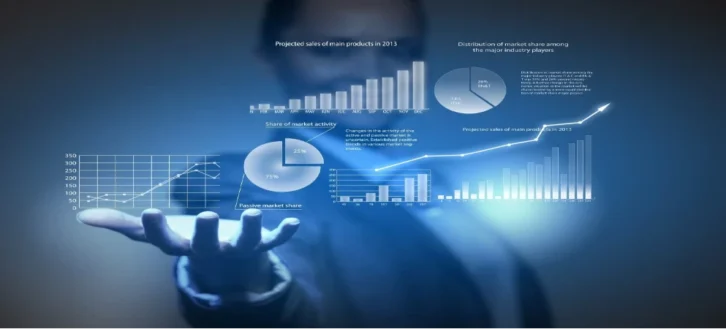Revamping the corporate vista, synthetic intelligence is reconfiguring the application of analytics and intellect in the corporate domain. An expanded spectrum of capabilities defines this noteworthy metamorphosis as Artificial Intelligence stretches beyond its customary function, emerging as an essential ally in dissecting intricate datasets, forecasting patterns, and enabling sagacious decision-making. The interplay between simulated intelligence and corporate acumen presents a diverse panorama of potentialities for businesses navigating the complexities of modern trade. The coordinated cooperation of these technical constituents fosters a more discerning comprehension of market dynamics and consumer conduct.
AI/ML Workloads provide evidence of the wider reach of AI’s influence on data-driven processes inside this technological tapestry. Workloads that combine AI and machine learning constitute a critical nexus where systems can process and analyze data and learn, adapt, and change independently. As the story of AI’s role in business intelligence and analytics develops, it becomes clearer how important AI/ML Workloads are. Data is a dynamic force driving organizations to make previously unheard-of insights and strategic decisions.
Revealing the Complexities of Cognitive Processing:
Investigating cognitive processing reveals a complex environment where advanced data analytics, machine learning, and artificial intelligence coexist. This complicated fusion illustrates the complexity inherent in the synergy of these technological components, reflecting human mental processes. Systems that use cognitive processing can learn, reason, and make judgments with human-like intuition beyond traditional limitations. This investigation peels back the layers of complexities in several industries, illuminating the paradigm-shifting possibilities of this changing technology.
Unveiling the Potential of Predictive Analytics

Organizations can confidently predict results by combining statistical techniques, machine learning, and historical data. This proactive strategy goes beyond simplifying decision-making procedures by giving businesses the adaptability needed to handle the complexities of a changing market environment.
The synergistic interaction of cognitive computing and predictive analytics transforms the landscape of traditional predictive modeling. It drives businesses toward a future where having foresight turns into a competitive advantage, enabling them to foresee and adjust to new developments and react quickly to established market trends. According to this paradigm, predictive analytics transforms from a static instrument into a dynamic force that enables companies to flourish in a constantly shifting business environment.
Uplifting Data Discovery to Unprecedented Pinnacles:
The field of data discovery is revolutionized by cognitive computing, which turns it from a reactive procedure into a proactive investigation of insights. Cognitive systems enable an intuitive connection with large-scale datasets through their sophisticated understanding of natural language and context. This straightforward querying feature allows users of any technical skill level to quickly obtain deep insights, promoting a strong and widespread data-driven culture inside the company.
Navigating the Complex Terrain of Unstructured Data:
Unstructured data is growing in volume and presents a significant challenge to traditional analytics techniques in the digital age. With its ability to process natural language, cognitive computing effectively overcomes these obstacles. It analyzes and deconstructs unstructured data from various sources, including emails, social media, and documents, providing critical insights previously hidden in the complex maze of unstructured data.
Steering Intelligent Automation:

As companies relentlessly strive for increased operational efficiency, intelligent automation becomes a bright light, guiding them through the complexities of daily work. Using cognitive computing’s amazing ability to learn and adapt, automation sets out on a revolutionary path and becomes intelligent. It does much more than just carry out preset activities; it dances dynamically with shifting conditions and has the inherent capacity to streamline operations and increase total productivity to previously unheard-of levels.
This symbiotic relationship between automation and cognitive computing signifies a paradigm shift in the dynamics of organizations as technology advances beyond fixed functions. The system’s flexibility becomes a defining characteristic as it responds quickly to today’s changing business environments. Organizations that embrace this intelligent evolution position themselves as agile innovators and efficient entities, ready to prosper in the dynamic landscape of today’s industry.
Embracing an Epoch of Enhanced Decision-Making:
Within the epoch of cognitive computing, decision-making undergoes augmentation, harmonizing human intuition with machine-generated insights. By understandably articulating relevant information, cognitive systems empower decision-makers to navigate complexity confidently. This synergistic interplay between humans and machines cultivates an informed and expeditious decision-making environment.
Strengthening Cybersecurity with Cognitive Safeguards:
The threat landscape grows proportionately along with the expansion of the digital frontier. By utilizing proactive threat detection and adaptive reactions, cognitive computing functions as a robust guardian, strengthening the foundations of cybersecurity. To protect sensitive data integrity and security, cognitive systems proactively detect possible attacks by analyzing patterns and anomalies in real time.
Cultivating Continuous Learning and Adaptation:
Cognitive computing is fundamentally based on its innate ability to learn and adapt continuously. These systems, driven by iterative learning algorithms, always evolve, improving accuracy and data comprehension with time. Not only does this iterative approach increase the efficacy of analytics, but it also strengthens businesses against the uncertainties that come with a rapidly changing business environment.
Conclusion: Navigating the Cognitive Horizon for Business Excellence
We see an imminent paradigm shift as we conclude our investigation into the fundamental implications of cognitive processing for analytics and corporate insight. The delicate synergy of advanced data analysis, automated learning, and synthetic intelligence has sparked a technological revival, radically transforming the mode of operation for corporate decision-making. Enterprises are already using cognitive processing not just as a tool but also as a strategic collaborator, recognizing its transformative potential. This strategic shift takes them to the pinnacle of competence in data-driven areas, indicating a significant shift in their approach to harnessing cutting-edge technologies for informed decision-making.
As we look to the future, we see that traditional boundaries will no longer limit decision-making due to the convergence of human cognition and computer capabilities. Cognitive systems provide firms with a unique perspective on understanding the intricacies of the business environment because of their exceptional abilities to process unstructured data and identify complicated patterns. In the role of an IT manager, it is essential to embrace cognitive computing as a technological development and to plan its smooth integration to strengthen the organization’s base and promote flexibility, resilience, and long-term success. Cognitive computing is the avant-garde composer in the symphony of business intelligence and analytics, harmonizing innovation with strategic insight, ushering in an era when the boundaries of what is possible keep expanding, driven by an unshakable commitment to knowledge and the strategic incorporation of cutting-edge technologies.


